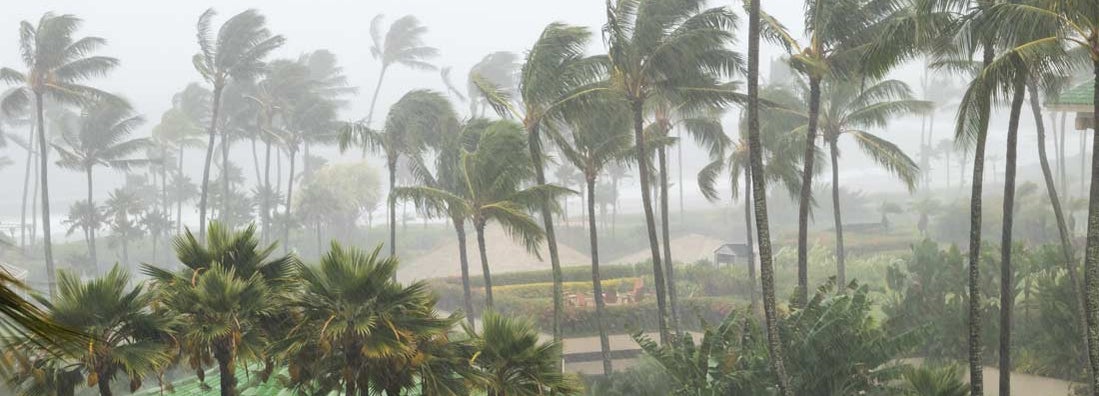Windstorm Insurance
(Find out if you need better coverage - and how you can get started today.)

Windstorms are weather events that produce strong winds and violent gusts accompanied by very little or no precipitation. Hurricanes, cyclones, derechos and tornadoes are often classified as windstorms, as are any events that include high winds that are strong enough to cause significant property damage.
Many states have provisions for windstorm insurance riders that can be purchased by homeowners to cover damage to property and personal belongings.
You can use this independent agent matching tool to find the best insurance solution in your area. Provide some details about what you're looking for, and get recommendations for the best agents for you. Any information you provide will only be sent to the agent you pick.
Windstorm Facts
- Windstorms can have wind speeds in excess of 200 mph.
- High winds cause about $1 billion in damage in the United States every year.
- Approximately 85% of all windstorm-related insurance claims are due to roof damage.
What Is Windstorm Insurance?
Windstorm insurance is a special type of property and casualty insurance designed to cover damage caused by high winds. Windstorm insurance may cover damage from hurricane-force winds, tornadoes, hail, and other weather events that are accompanied by wind gusts that exceed 35 mph.
In some cases, homeowners insurance policies will cover damage caused by high winds, but in many states where wind damage is common, insurance companies may require homeowners to purchase a separate windstorm insurance rider to provide coverage for this type of damage.
It is very important for you to be aware of what is and is not covered by your homeowners policy.
What Does Windstorm Insurance Cover?
Windstorm insurance will typically cover damage to your home and personal belongings inside your home. Many policies will also include coverage for detached structures such as garages, sheds and even swimming pools. When gale-force winds harm roofs and windows, this often creates the opportunity for rain and debris to cause additional damage. Most policies will cover the repairs as long as you file the claim soon after the event.
Sometimes, windstorms are followed by storm surges and flooding. It is important to realize that windstorm insurance will not cover damage caused by rising waters. Flood insurance coverage must be purchased separately to cover flooding events, and takes 30 days to go into effect.
Windstorm insurance will not cover damage to your vehicle that may occur if a tree falls on it or if it is damaged by blowing debris. You must have a comprehensive car or truck insurance policy in place to cover this sort of damage.
Insurance Claim Tips Following a Storm with High Winds
If you should ever need to file a claim for damage caused by a windstorm, there are steps you can take to ensure that you get the coverage to which you are entitled. The most important thing to remember is to act quickly. Many policies limit the time frame in which you can file a claim for storm damage. Often this is because failure to fix the problems can lead to more damage later.
Immediately after a windstorm, it's a good idea to take the following steps:
- Record the date of the storm and save news articles about the storm as proof.
- Assess and record all damage that you see from the ground; take pictures and/or video.
- Have at least two reputable contractors inspect your property, especially your roof, for damage. Get written repair estimates from both.
- Contact the claims department of your insurance carrier, provide all the information you have gathered, and request a visit from a claims adjuster.
- Ask one of your contractors to be present during the insurance adjuster’s inspection to ensure that you receive a fair assessment.
- If your claim is denied, remember that you are entitled to meet with three different insurance adjusters. Request another evaluation.
How to Find Windstorm Coverage
When it comes to windstorm insurance coverage, there is no one-size-fits-all solution. Coverage options vary by location and insurance carrier. While one insurance company may require specific insurance for hurricanes, another may include it in a windstorm policy, while yet another may include it in a basic homeowners policy.
With so many different options and requirements, how do you know if you are actually covered for the storm damage that may affect you? Or, is it possible you are spending too much by purchasing insurance for something that is already covered in another policy?
The fact is, insurance is something that needs to be researched.
DID YOU KNOW?
As a consumer, it's important that you understand what is in your current homeowners policy, and what isn't.
If you find your coverage inadequate, take time to shop for a few different options from reputable insurance companies. Find a solution that's going to work for you and your family, and that will fully cover your risks, no matter what weather comes your way.
Use this independent agent matching system to find the best insurance plan in your area. Describe what you’re looking for, and the tool will recommend the best agents for your needs. Any information you provide will only be sent to the agents you pick.
